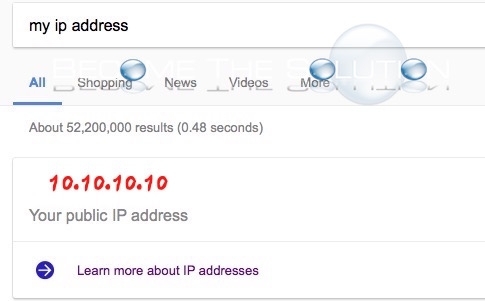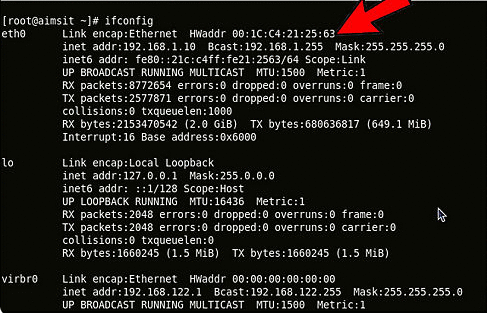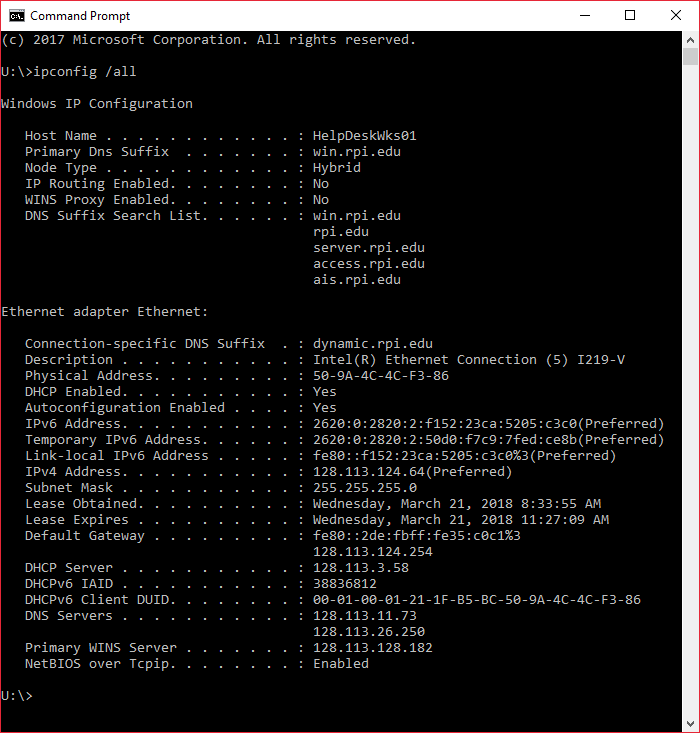

For Wi-Fi, that’s simple to do - just click the Wi-Fi menubar icon, select Turn Wi-Fi Off, wait a few seconds, then use the same menu to select Turn Wi-Fi On.It is recommended to run a free scan with Combo Cleaner - a tool to detect malware and fix computer errors. It’s a good idea to restart that particular network connection after you change the MAC address to ensure a good connection. One other thing: editing your MAC address may cause temporary network issues.

That gives them a new MAC address each time they start their computer. Some privacy fans make this command a script, then have it run each time the Mac is rebooted. Realize that any time you restart, the MAC addresses revert to the number originally assigned to the interface, so this is by no means permanent. In my example, that selects a random hexadecimal string that fits the required format and then passes that random string to ifconfig to set the MAC address.Įvery time you run this command, it generates and sets a new MAC address for the chosen interface. Openssl rand -hex 6 | sed 's/\(.\)/\1:/g s/.$//' | xargs sudo ifconfig en1 ether Once again in Terminal, type (or copy and paste) the following command, being sure to change the BSD Device Name (en1 or en0) to the interface you wish to change: The next method changed the MAC address to a randomly chosen address, which is probably the absolute best way to ensure your privacy. In this case, Terminal sets the MAC address of en1 (which is the Wi-Fi adapter in my iMac) to the address we selected. Now at the Terminal prompt, (without the quotes) type in “ sudo ifconfig en1 ether 14:d2:71:11:57:a6" and press the return key. For example, something like 14:d2:71:11:57:a6 would work. It needs to be twelve hexadecimal numbers in groups of two, separated by colons. If you’re not comfortable with the OS X command line, perhaps it’s not a good idea to play with MAC addresses…įirst, let’s change the MAC address to a specific address. Both of the methods I’m demonstrating here require the use of Terminal. Remember, there’s usually no reason for you to change the MAC address unless you have a specific reason to do so. Launch Terminal from the Applications > Utilities folder, then type in the command highlighted in yellow below, substituting the correct BSD Device Name (in this case, en1): Using Terminal to determine the MAC address of a network interface You can also use the Terminal to find the current MAC address of an interface.

Use the System Information Utility to find other MAC addresses On my iMac (see image below), the Ethernet card is listed as en0 with a MAC address beginning with 38:c9:86. In either case, click on Network, then the specific network hardware you wish to find. Launch it from Applications > Utilities > System Information, or from the Apple Menu > About This Mac > System Report. If you need to check the MAC address for other network devices, the System Information utility is very helpful. The MAC address is right below that interface name - in this case, it begins with the hexadecimal address 28:f0:76.and I’m going to stop right there because I don’t want to encourage hackers to break into my machine! First, it’s using an interface with the name of en1 to connect to Wi-Fi. This tells us a few things about the Mac we’re on. This is quite simple just hold down the Option key on your keyboard, then click on the Wi-Fi icon in the Mac menubar: Using the option key and Wi-Fi icon to find the interface name and MAC address for Wi-Fi It’s rare, but it’s one of those things you might need to know someday.įirst, let’s find the existing MAC address for the connection you’re most likely using - a Wi-Fi connection. This address can be used to identify a specific computer when it’s on the Internet, so those individuals who are very concerned about privacy sometimes use what’s called “MAC address spoofing” to temporarily mask the MAC address of the computer they’re using. Every network card in your Mac, whether it’s for Ethernet, Wi-Fi, or even Thunderbolt, has been assigned a unique identifier called a Media Access Control or MAC address.


 0 kommentar(er)
0 kommentar(er)
